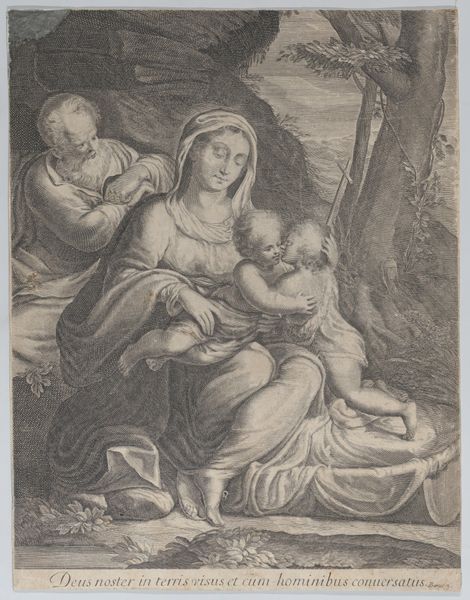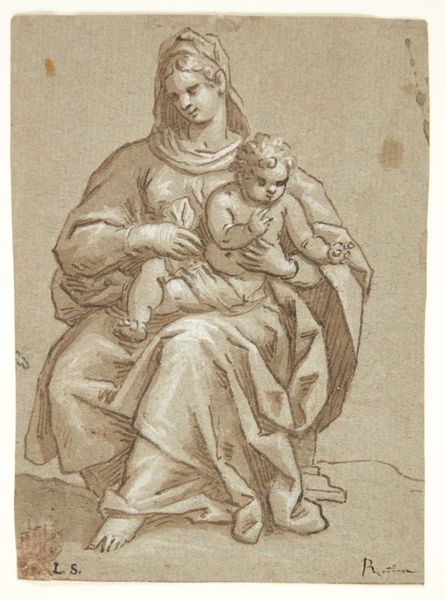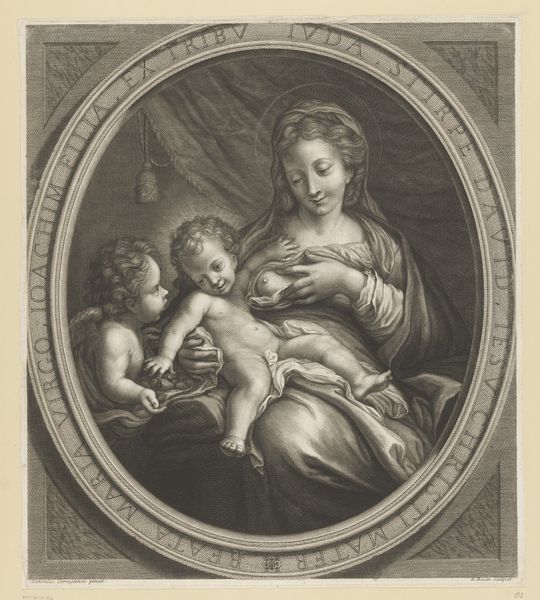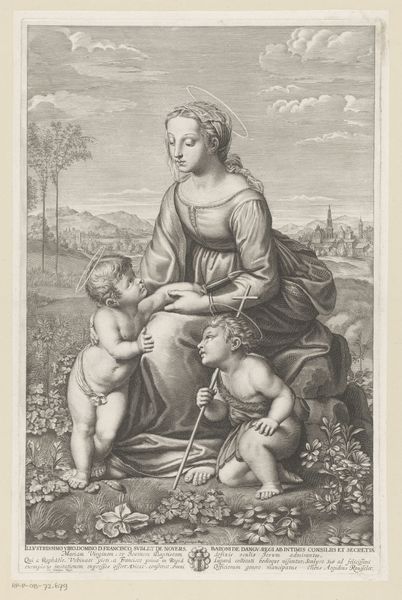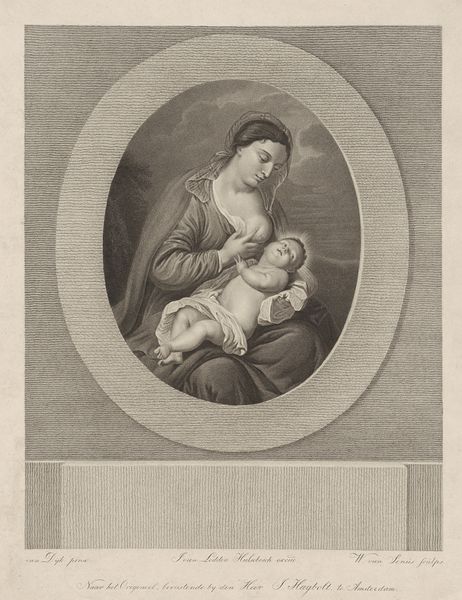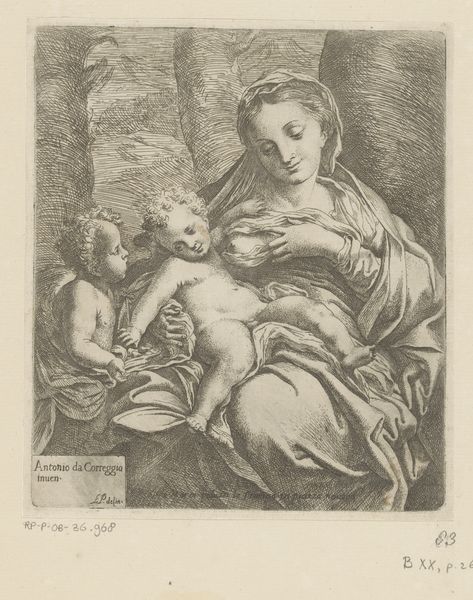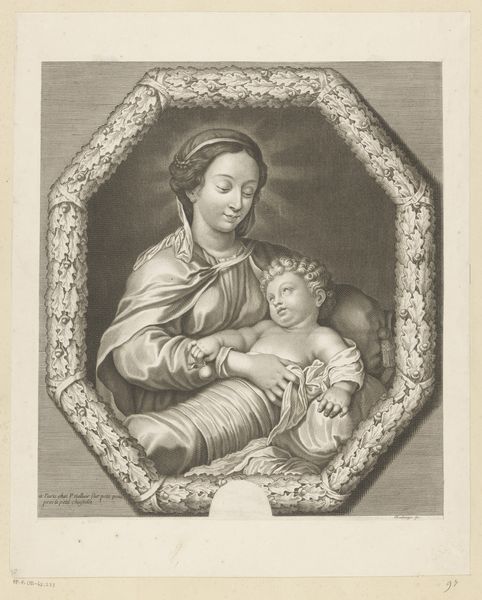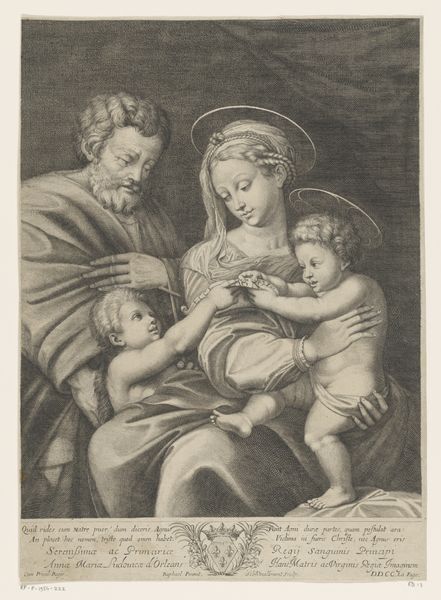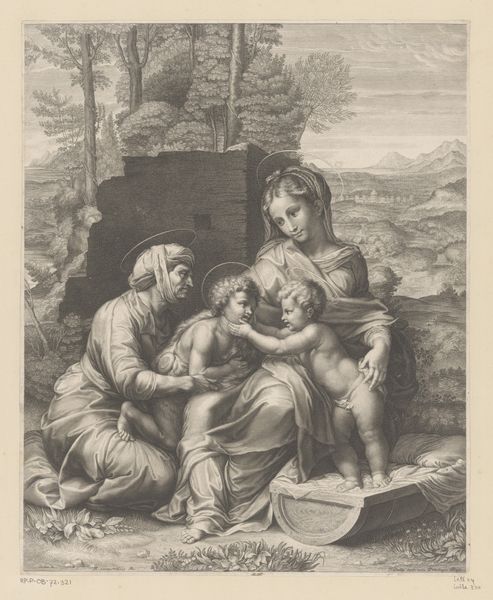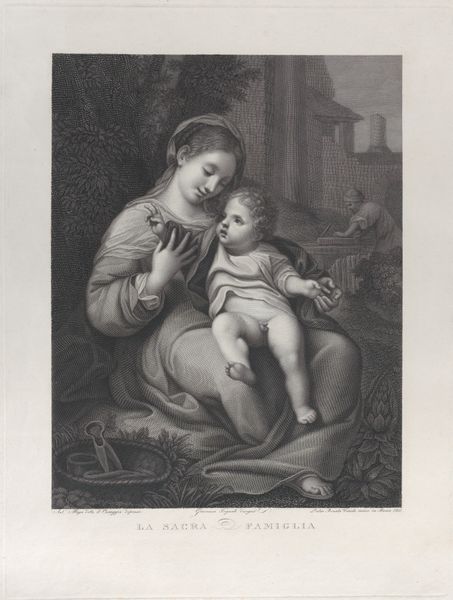
drawing, chalk, charcoal
#
portrait
#
drawing
#
charcoal drawing
#
11_renaissance
#
group-portraits
#
chalk
#
charcoal
#
italian-renaissance
Copyright: Public Domain
Curator: Looking at this artwork fills me with such quiet emotion, a hushed reverence, almost as if stepping into a dream touched by divinity. Editor: Before we drift too far into the ethereal, perhaps we should first consider the earthly reality of this artwork. It’s a chalk and charcoal drawing created by Eugen Eduard Schäffer between 1852 and 1853. It currently resides here at the Städel Museum, but the intriguing thing to me is the full name Raffaels „Madonna Terranuova“, right? Why did Schaffer make a copy of the old master work from the renaissance era? Curator: A copy it is, and perhaps an act of devotion in its own right. Don't you find it mesmerizing how, even in monochrome, Schäffer captures the soft folds of Mary’s robe, the chubby limbs of the cherubs, each tiny finger defined? It speaks of love, the delicate balance of familial affection in the context of the divine. The drawing becomes a portal. Editor: Portals are nice, but what I find equally remarkable is the labor involved in translation: Schaffer’s choice of humble materials. Chalk and charcoal, the tools of a draftsman. It's about access and availability to different techniques throughout time, if Schaffer’s process reflects an understanding that art making can be a method of inquiry, a form of knowledge. Curator: I can’t help but feel there is also something of Schaffer’s soul in the reproduction itself – like a musician covering a beloved song. The act of recreating a master’s work invites the new creator’s understanding into the piece. Editor: It is fascinating, this layering of craftsmanship and meaning, right? Here, in the Städel, we are confronted with both Schaffer's skill in replicating form, and, indirectly, Raphael's genius that inspired it. And what about our own assumptions, as contemporary viewers? What do we value now, how do we think about art in the modern day? Curator: What is there not to appreciate, when confronted with an artwork as rich as this? In copying, in looking, we honor our shared heritage. Editor: Indeed, the piece makes us wonder if Schaffer ever paused in his labor to question our notions of originality and craft and in our assumptions about why we've created them.
Comments
No comments
Be the first to comment and join the conversation on the ultimate creative platform.
